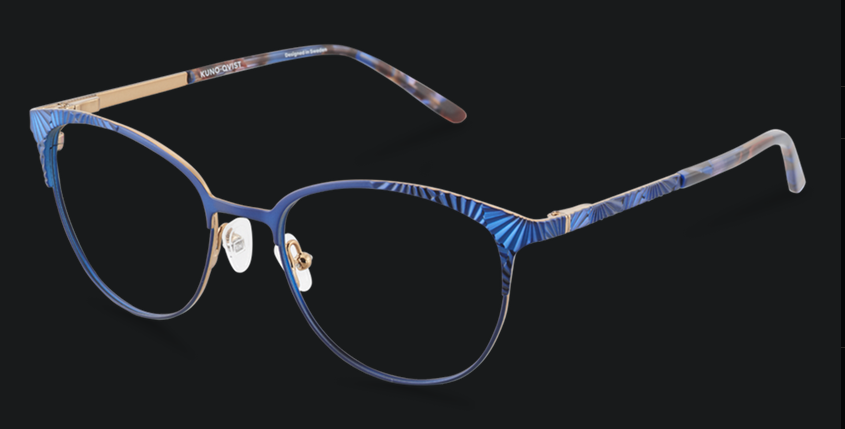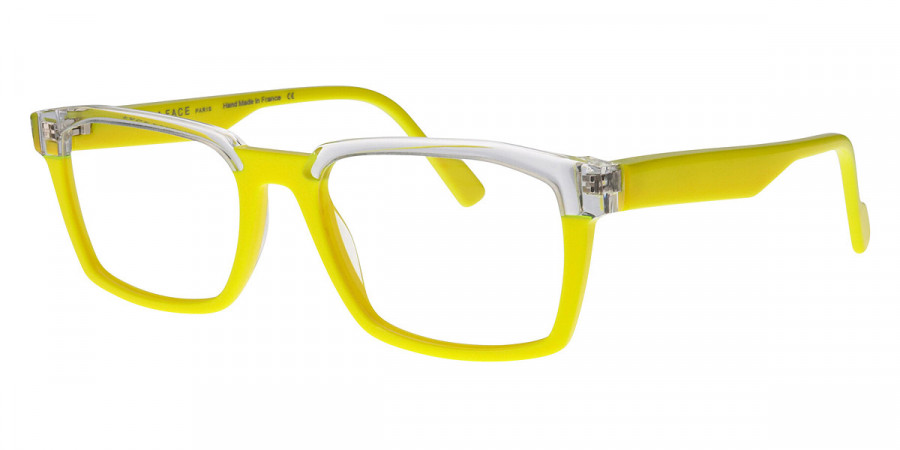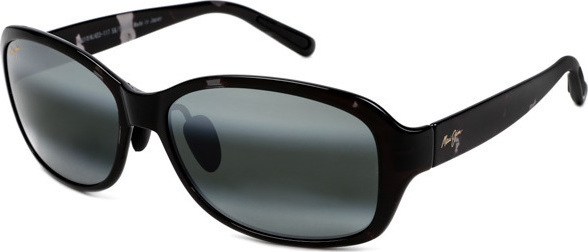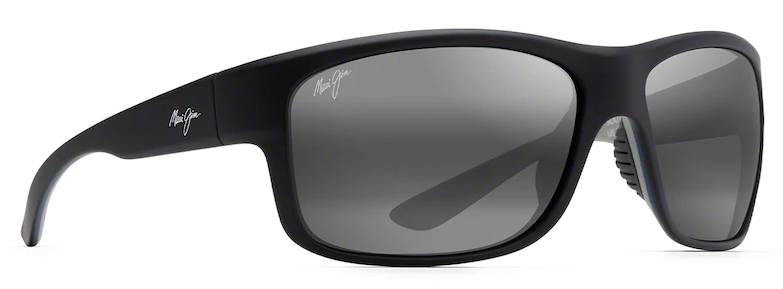This weblog post is the fourth of a series of nine about optics and optical equipment. This post is about eyeglasses, including sunglasses. Towards the end I also make some comments on glasses for reading, as well as being used with assorted screens.
Eyeglasses
Both Trish and I have used eyeglasses since we were 13. Yes, since puberty.
We have renounced the discount optical retailers found everywhere in the world, locally in Levanger and Steinkjer, cities 40 km south and 35 km north of us, respectively. We now patronize the optician located at our former bank building in Straumen, about 13 km east of our house. Husby Optikk was founded in 1854 in Steinkjer. Anne Sofie Staven Husby, the niece of a neighbour, has run the Inderøy branch since it opened in 2020. I suspect she met her husband, Terje, who runs the larger, Steinkjer branch, while they both studied to be opticians in Copenhagen.
Trish’s regular eyeglasses are in frames made by Kuno-Qvist. a Swedish firm founded in 2004, and located in the Norra Sorgenfri industrial area of Malmö. Its motto is Always in character. Her Khantra 52-18 model offers metal frames with blue and brown highlights: with a feather like pleated metal pattern,… [that] will evoke a feeling of movement in the frame when the wearer moves. Trish always enjoys blue, and in this case it matches the colour of her eyes.

My regular eyeglasses are housed in frames made by Face a Face, Paris. It calls itself an audacious, non-conformist eyewear brand. That definitely suits my personality. Despite its French origins in 1995, it now has its headquarters in Aarhus, Denmark. The model I use is called Kieth 3, and is made in opaque fluid yellow. These frames are an extreme bright yellow. I had asked Anne Sofie to find frames in signal yellow, and I am more than pleased with the result.

Sunglasses
Both Trish and I use sunglasses made to our individual prescriptions, with polarized glass. We may need these to drive legally with sunglasses, but also prefer to view the world through corrected lenses.
As usual, Trish invested in Maui Jim Koki Beach sunglasses first. I would describe these sunglasses as basic. Trish’s eyes still function as intended/ designed. She does not need extreme features. These provide everything that is needed, but nothing more, including a clear, glare-free view of the world. The name comes from a beach on Maui’s east shore.

I have started to prioritize the selection and care of sunglasses, because of the challenges I have with my eyes. I want sunglasses that feel comfortable, and are kind to my eyes. I use sunglasses for driving, more often than I use conventional glasses. Compared to Trish, I need greater protection from glare. This includes winter glare from snow. Thus, I felt that Maui Jim Southern Cross = Hanaiakamalama (Hawaiian) with their polarized wrap were better at meeting my sunglass needs. Other features, such as a triple-injected nylon frame in Soft Black with Sea Blue and Grey, were nice to have.

In 1980, Jim Richards, a fisherman, began selling sunglasses on the beaches of Maui, Hawaii. Some years later, the company developed polarized sunglasses to protect eyes from glare and UV light. In 1991, Walter Hester, a boat captain, purchased and rebuilt the company, calling it Hester Enterprises, Inc. By 1994, the company was named Maui Jim Sunglasses, and allowed Illinois-based RLI Vision to become its mainland distributor. In 1996, Maui Jim Sunglasses bought RLI Vision from its parent company, Peoria, Illinois-based RLI Corporation to form Maui Jim Inc. The corporate headquarters is in Peoria, but there is a branch office in Maui. In 2004, the company opened a distribution center in Braunschweig, Germany. It later became its European headquarters.
Part of the reason why I think I will stick with Maui Jim as a brand was an earlier work related trip to Sicily when people with fake Ray-Ban sunglasses were issued an €800 fine by the customs authorities in Italy. At the time, I was wearing real Ray-Bans, but I found the incident so offensive, that I vowed never to buy Ray-Bans again. I haven’t.
Other eyeglasses
There are several other types of glasses available. At one time, I used reading glasses. As I aged I found it better just to remove the glasses. I was able to read just as well. Many people experience the opposite. They need some form of reading glasses.
My former employer, Nord-Trøndelag county, encouraged the use of device/ computer glasses. There was a claim that using them make made work with a screen more comfortable. One point that is often taken up involve blue light. Electronic device screens radiate many colours, including blue, with wavelengths from about 400 nm to 495 nm. Some people are affected by blue light. Blue light can be divided into two bands, blue-violet light (400-455 nm) and blue-turquoise light (465-495 nm). Sleep/wake = circadian cycles are impacted by blue-turquoise light, but not blue-violet light. The main source of all forms of blue light is sunlight. Device glasses typically filter blue-violet light, but not blue-turquoise light, that impacts the circadian rhythm. My experience of using device glasses, is that they are not particularly helpful. I do not currently use them.
Displays/ Screens
I use three very different displays/ screens with my computing devices: a hand-held device/ smart phone with a 5.9″ display = 1080 x 2400 pixels; a laptop with a 14″ display = 1920 x 1080 pixels; and a desktop with a QHD 27″ display = 2560 × 1440 pixels. The last one is best when my eyes feel strained. About four years ago it replaced another 27″ display with HD resolution = 1920 x 1080 pixels, that I had used for twelve years. I find that the increased resolution, rather than the screen size, most helpful. For me, the most effective improvement comes from using a dark background.
Trish does not use glasses when working with computer screens, either. She has almost identical devices to mine, but on her desktop machine she but prefers to use a 24″ HD display. Yes, she was offered an identical QHD 27″ display, but declined. In addition, she uses two Kobo e-readers, a black Glo HD (N437) with a 6″ display = 1448 x 1072 pixels (for fiction) , and a white Libra H2O (N873) with a 7″ display = 1680 x 1264 pixels (for non-fiction). I have tried to use Kobos, but prefer to read paper books.
The main rule seems to be that everyone is different.
Note: This post was originally written early in the morning of Monday 2024-03-18, under the title Magnification. Later in the day that was changed to Optics. It was saved using that new title, for the first time, at 18:10. It was then split into four posts, later expanded to five, on 2024-03-23. On 2024-04-09 at 20:00 the first post was scheduled to be published 2024-06-01 at 12:00.
Note: I appreciate detailed information. At times, I even refer to myself as a detailist. When it comes to products I own and use, including eyeglasses, I want to know who designed it, and why it was designed the way it was. I want to know product history, how and why a product evolved. I am fascinated by the techniques used to fabricate items. Of course, I want to know where things are made. The name of a country is seldom enough of an answer. I want a much more specific location, if possible a street address, and – for the past couple of decades – an image of that location, if only from Google Streetview.

